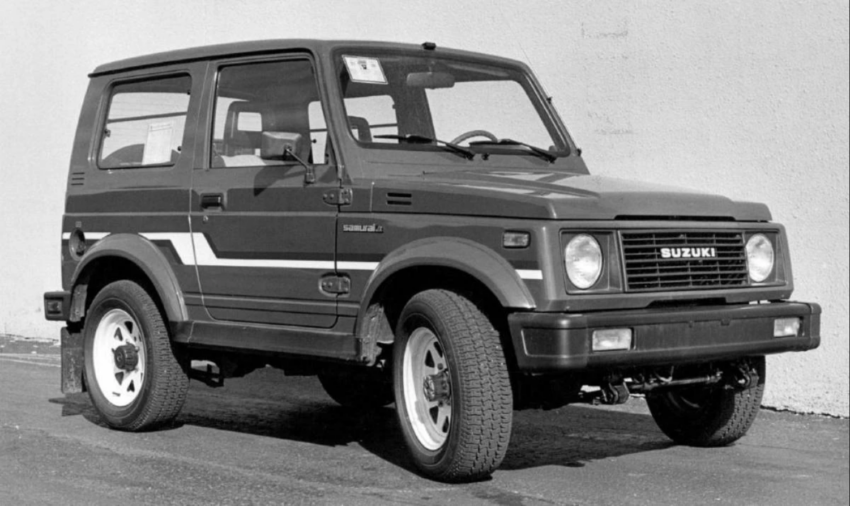You’ve probably seen a Samurai on city streets, a college campus, or out in the woods. They can travel where other vehicles cannot, thus they may be found practically anyplace. While the Suzuki Samurai was popular in the United States for a time, its story did not begin or end there.
A summary of the Suzuki Samurai’s history
The Suzuki Samurai debuted in the United States for the 1986 model year and was discontinued in 1995, although its tale began in 1968 as the ON360, a Kei-class automobile made by the Hope Motor Company in Japan.
In Japan, Kei-class automobiles had to meet certain size standards in order to qualify for tax breaks, and Suzuki purchased Hope to swiftly join that market. By 1970, Suzuki had branded the Hope ON360 as the LJ10 (LJ for Light Jeep), while it is now known as the Jimny in other areas of the world.
Suzuki introduced the 1986 Samurai version to the United States in 1985, with a carburated 1.3-liter four-cylinder engine producing 63 horsepower and 74 lb-ft of torque. The Samurai took 16.9 seconds to accelerate from zero to 60 mph and 20.47 seconds to complete the quarter mile, clocking in at 64.5 mph at the finish line, according to MotorTrend.

While those times did not impress the sports car crowd, the Samurai had unrivaled off-road capability thanks to its standard four-wheel drive and manual-locking front hubs.
Suzuki Samurai issues
One of the most serious issues with the Suzuki Samurai, according to Hagerty, is its appalling safety record. In the late 1980s, for example, the Samurai lacked airbags and ABS, and Suzuki issued a recall for seatbelts that wouldn’t lock. Furthermore, its lightweight design and short wheelbase resulted in an unfortunate and undeserved rollover incident during a videotaped Consumer Reports test; more on that in a moment.
Other problems with the Samurai include rusty flooring, clicky starts, and leaking distributor O-rings. Furthermore, the stock Samurai carburetor is finicky and complicated, prompting many owners to swap it out for a simpler version. Finally, the plastic shifter frequently fails due to age and use, but it is simple to replace with a brass unit.

The SUV’s final demise
Consumer Reports captured footage of a Suzuki Samurai sliding onto two wheels during a high-speed accident avoidance test in 1988. The film was made public by the magazine, and anyone who wanted to see it could. The film was shown on prime-time television by news networks, along with the allegation that young Samaruai rolls over easily.
The extended video footage shows Consumer Reports experts changing the test settings to compel the Samurai to fail the test after passing the initial route, which kept all four tires firmly on the ground at speeds of up to 55 mph. The manipulated test and aggressive statements made by Consumer Reports prompted Suzuki to sue the publication. After a protracted legal struggle, the two parties reached an out-of-court settlement.
However, by the end of the legal battle, Samurai sales had dropped to a few thousand per year, down from over 80,000 the year before the fateful test. While the Suzuki Samurai survived for a few more years, its availability in the United States is likely to have ended due to the Consumer Reports scandal.

